Welcome to Technology Moment, where we delve into the innovations that have transformed the course of history. From ancient discoveries to modern marvels, technology has always been the cornerstone of human progress, sparking revolutions and reimagining possibilities.
In this blog, we take a journey through the Top 10 Technology Moments That Changed the World, highlighting the pivotal breakthroughs that reshaped societies, connected people, and redefined our understanding of what’s possible. Whether you’re a tech enthusiast or a curious learner, join us as we celebrate these remarkable milestones and the visionary minds behind them.
Technology has always been a cornerstone of human development, playing a pivotal role in shaping societies, economies, and even how we interact with one another. From the invention of simple tools to the advent of artificial intelligence, technology has consistently pushed the boundaries of what is possible, redefining how we live and think.
When we talk about “technology moments,” we are referring to those game-changing innovations or events that have fundamentally altered the course of history. These are not just ordinary advancements; they represent milestones that have created ripples across multiple aspects of human life, from communication and transportation to medicine and space exploration.
Why are these moments so important? It’s because they reflect the sheer ingenuity of humankind and the ability to solve complex problems with innovative solutions. Each of these milestones didn’t just improve existing processes—it revolutionized them, opening doors to entirely new possibilities and industries.
For instance, think about the wheel’s invention—a seemingly simple innovation that sparked the beginning of transportation as we know it. Or consider the birth of the internet, which transformed how we access information, communicate, and even conduct business. These moments don’t just tell the story of technological advancement; they encapsulate humanity’s relentless pursuit of progress.
In this article, we’ll explore ten such pivotal moments that not only changed the world but also redefined the way we understand technology’s role in our lives. Each of these breakthroughs, from the printing press to renewable energy, represents a step forward in our collective journey, showing how far we’ve come—and hinting at how far we still have to go.
By reflecting on these transformative events, we can better appreciate the incredible innovations of the past and gain insight into what the future might hold. After all, every great leap forward begins with a single groundbreaking moment.
Table of Contents
1. The Invention of the Wheel
The invention of the wheel is widely regarded as one of the most significant technological achievements in human history. Its impact on transportation, engineering, and the development of civilization cannot be overstated. Let’s explore why this seemingly simple invention was so transformative.
The Origins of the Wheel
The wheel is believed to have been invented around 3500 BCE in Mesopotamia, though early depictions and artifacts suggest that it was first used for pottery. These early wheels, known as “potter’s wheels,” were flat circular structures used to shape clay. Over time, humans recognized the potential of this design for transportation and began adapting it for other purposes.
From Concept to Practical Use
The leap from a stationary potter’s wheel to a mobile mechanism was revolutionary. Early wooden wheels were attached to axles and used on carts, significantly easing the transportation of goods and materials. This invention drastically reduced the physical effort required for movement, allowing humans to transport heavier loads over longer distances with greater efficiency.
Impact on Transportation
Before the wheel, transportation relied on human or animal labor to drag sledges across rough terrain. The introduction of wheels transformed mobility, making it smoother and faster. For instance:
- Agriculture: Farmers could transport crops and tools more effectively.
- Trade: Merchants could move goods over vast distances, fostering trade and economic growth.
- Migration: Communities could relocate with ease, contributing to the spread of cultures and ideas.
Foundation for Machinery
Beyond transportation, the wheel became a fundamental component of countless machines. Its circular design inspired innovations in engineering, such as pulleys, gears, and water wheels, which formed the basis of early industrial processes. The wheel also influenced the creation of more complex technologies, paving the way for inventions like automobiles, trains, and airplanes.
Cultural Significance
The wheel wasn’t just a technological marvel; it also held symbolic importance in various cultures. It represented progress, continuity, and the cycle of life, as seen in the wheels depicted in religious and philosophical contexts like the Buddhist Dharmachakra.
The Evolution of the Wheel
Over time, the wheel evolved to meet the needs of advancing societies:
- From Wood to Metal: Early wooden wheels gave way to metal-reinforced designs, improving durability.
- Rubber Tires: The advent of rubber tires revolutionized mobility in the modern era, providing smoother rides for vehicles.
- High-Tech Innovations: Today, wheels are integral to robotics, spacecraft, and even futuristic concepts like hyperloop transportation.
The Lasting Legacy of the Wheel
The wheel’s invention laid the groundwork for countless advancements, influencing fields as diverse as transportation, construction, and manufacturing. Its enduring utility highlights humanity’s ability to solve problems through ingenuity, making it a cornerstone of technological progress.
2. The Printing Press Revolution
The invention of the printing press by Johannes Gutenberg in the mid-15th century was a groundbreaking moment that forever changed the course of human history. Before its creation, books and manuscripts were painstakingly copied by hand, making them rare, expensive, and accessible only to the privileged few, such as clergy and nobility. Gutenberg’s printing press not only revolutionized the production of written materials but also laid the foundation for the spread of knowledge, ideas, and cultural transformation across the globe.
The Mechanism Behind the Printing Press
Gutenberg’s printing press employed movable type technology, where individual letters cast in metal could be rearranged to create different texts. This innovation allowed for rapid and reusable printing compared to earlier methods like woodblock printing. The press used an ink-based system to imprint characters onto paper, a much faster and more efficient process.
Why the Printing Press Was Revolutionary
- Mass Production of Books
The printing press made it possible to produce books on a scale previously unimaginable. This dramatically reduced the cost of books, making them more accessible to a broader audience. - Spread of Literacy
With cheaper and more readily available books, literacy rates began to climb. More people, regardless of their social standing, gained access to educational materials, fostering a culture of learning. - The Democratization of Knowledge
For the first time, information was not confined to the elite. The printing press empowered individuals to explore new ideas, question established norms, and participate in intellectual discussions.
Impact on Society and Culture
- The Renaissance and Scientific Revolution
The printing press played a vital role in fueling the Renaissance, a period of renewed interest in art, science, and philosophy. Thinkers like Galileo and Newton benefited from the widespread dissemination of their works, which might have remained obscure without the press. - The Reformation
Martin Luther’s 95 Theses, widely distributed thanks to the printing press, sparked the Protestant Reformation. This event reshaped the religious and political landscape of Europe. - Global Exploration
Maps and travelogues, made possible by the printing press, encouraged exploration. Figures like Christopher Columbus relied on printed materials to navigate the seas and share discoveries.
The Printing Press Today
While we’ve come a long way from Gutenberg’s original invention, its impact resonates in modern technologies. Digital printing, e-books, and even the internet owe their existence to the principles laid down by the printing press. It set humanity on a path toward information accessibility that continues to shape the modern world.
The printing press wasn’t just a technological marvel—it was a cultural revolution. It empowered individuals, ignited intellectual movements, and created a ripple effect that still influences the world today. Truly, the printing press is one of the most profound milestones in technological history.
3. Harnessing Electricity
The moment humanity harnessed electricity stands as one of the most transformative events in technological history. Electricity’s discovery and subsequent application didn’t just change the way we light our homes—it fundamentally reshaped every aspect of life, from industry to communication.
Discovery and Early Understanding of Electricity
The journey began with ancient observations of static electricity and lightning. Greek philosopher Thales of Miletus noticed how rubbing amber could attract light objects, hinting at the existence of an invisible force. Fast forward to the 18th century, Benjamin Franklin’s famous kite experiment in 1752 helped establish the link between lightning and electricity, propelling curiosity about this mysterious phenomenon.
Pioneers of Electricity
The 19th century saw monumental breakthroughs. Alessandro Volta invented the electric battery in 1800, providing a consistent source of electrical current. His invention not only demonstrated that electricity could be stored but also paved the way for countless experiments.
Michael Faraday’s work on electromagnetic induction in the 1830s became the foundation for electric generators, allowing electricity to be produced on a larger scale. Nikola Tesla and Thomas Edison later played pivotal roles in electrifying cities. Tesla championed alternating current (AC), which could transmit electricity over long distances, while Edison developed the practical direct current (DC) systems and the first incandescent light bulb.
Industrial Revolution and Electricity
With the ability to generate and distribute electricity, industries underwent a dramatic transformation. Factories became more efficient as they transitioned from steam power to electric power, enabling round-the-clock production. This era also gave birth to electric appliances, revolutionizing household chores and improving living standards.
Electricity and Modern Life
Electricity’s reach expanded rapidly during the 20th century, touching nearly every facet of life. It powered the rise of telecommunications, with inventions like the telegraph, telephone, and eventually the internet. Electrified transportation systems, such as subways and trains, changed urban landscapes and improved mobility. It also became the backbone of entertainment, powering radios, televisions, and cinemas.
Global Electrification
One of the most profound impacts of harnessing electricity has been its ability to bridge gaps between societies. Electrification programs brought power to rural and underserved areas, unlocking opportunities for education, healthcare, and economic growth. Countries with widespread access to electricity often experienced rapid development compared to those still reliant on traditional energy sources.
The Future of Electricity
Today, we are entering a new era of electricity with smart grids, renewable energy integration, and advancements in energy storage. Solar panels, wind turbines, and battery technologies ensure that the power driving our lives is cleaner and more sustainable. The goal is to provide reliable, affordable electricity to every corner of the globe while mitigating environmental impact.
4. The Birth of the Internet
The birth of the internet stands as one of the most transformative moments in human history, fundamentally altering communication, commerce, education, and nearly every facet of daily life. What began as a military and academic experiment evolved into a global phenomenon, reshaping the modern world.
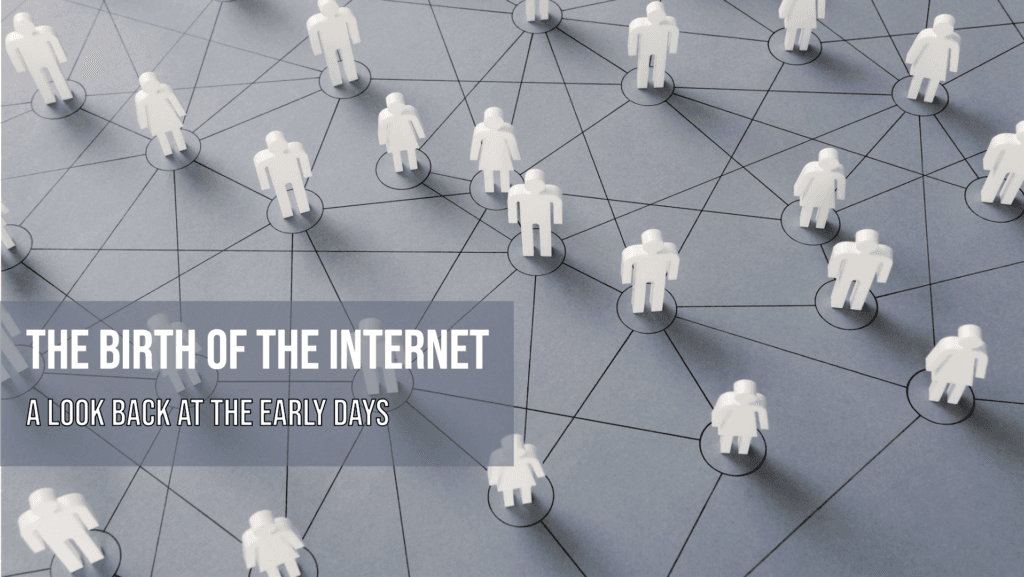
From ARPANET to the World Wide Web
The journey of the internet began in the late 1960s with ARPANET (Advanced Research Projects Agency Network), a project funded by the U.S. Department of Defense. ARPANET’s primary goal was to develop a system that could maintain communications even in the event of a nuclear attack. This network connected four key research institutions and enabled the first successful data transfer between computers in 1969.
By the 1970s, ARPANET expanded its reach, and the invention of TCP/IP (Transmission Control Protocol/Internet Protocol) by Vint Cerf and Robert Kahn laid the foundation for modern networking. This protocol standardized how data was sent and received, making it possible for different computer systems to communicate effectively.
The real turning point came in 1989 when Tim Berners-Lee, a British computer scientist, introduced the World Wide Web. His innovation allowed users to access information using hyperlinks, creating an accessible, user-friendly platform. By 1993, the launch of the Mosaic web browser made the internet more intuitive and visually appealing, leading to rapid adoption worldwide.
How the Internet Connected the World
The internet broke down barriers of time and space, enabling instantaneous communication across continents. Email revolutionized correspondence, while online chat rooms and forums brought people together like never before. E-commerce giants like Amazon and eBay emerged in the mid-1990s, redefining the way people shop and do business.
The 2000s saw the rise of social media platforms such as Facebook, Twitter, and Instagram, creating virtual communities where billions of people share their lives, ideas, and cultures. Video conferencing, driven by platforms like Zoom and Skype, became indispensable for personal and professional interactions, especially during global crises like the COVID-19 pandemic.
A Foundation for Modern Innovation
The internet serves as the backbone for numerous technological advancements. From cloud computing and IoT (Internet of Things) to AI and machine learning, many groundbreaking technologies rely on the internet’s infrastructure. It has also democratized access to education and information, enabling individuals from remote parts of the world to learn, innovate, and contribute to global conversations.
Moreover, the internet has become a catalyst for social and political change. Online campaigns, hashtags, and digital activism have amplified voices and driven movements for justice and equality. At the same time, it has created challenges like cybersecurity threats, misinformation, and privacy concerns.
The Future of the Internet
As we look ahead, the internet continues to evolve. With the advent of Web 3.0, blockchain technology, and the Metaverse, the next phase of the internet promises to be even more immersive and decentralized. High-speed 5G networks and satellite-based internet services, like Elon Musk’s Starlink, aim to provide seamless connectivity worldwide, ensuring no corner of the planet is left behind.
5. The Development of Computers
Computers are arguably one of the most transformative technologies in human history. Their development has revolutionized industries, reshaped daily life, and enabled unprecedented advancements in science, communication, and beyond. Let’s explore this journey in detail, from the earliest machines to the modern powerhouses we use today.
Early Computers: Pioneering the Digital Age
The origins of computers trace back to the mid-20th century, when scientists and engineers began creating machines capable of performing complex calculations. These early devices were monumental in size and required entire rooms to operate, yet their capabilities were limited compared to even the simplest modern devices.
- The ENIAC (1945): The Electronic Numerical Integrator and Computer, or ENIAC, is considered the first general-purpose electronic computer. Developed in the United States, it could perform thousands of calculations per second, a feat previously unimaginable.
- Alan Turing’s Contribution: Turing, often called the “Father of Computer Science,” conceptualized the Turing Machine—a theoretical device that laid the foundation for how computers process instructions.
- UNIVAC (1951): The Universal Automatic Computer was the first commercially available computer, marking the transition from military and academic applications to business use.
The Rise of Personal Computers
The 1970s and 1980s saw a monumental shift: computers moved from research labs into homes and offices, making technology accessible to ordinary people.
- The Altair 8800 (1975): Often referred to as the first personal computer, the Altair 8800 sparked interest among tech enthusiasts. It came as a kit, requiring users to assemble it themselves.
- Apple II (1977): Designed by Steve Wozniak and marketed by Apple, the Apple II was one of the first user-friendly personal computers. It featured a keyboard, a color display, and expandability options.
- IBM PC (1981): IBM’s entry into the personal computing market solidified the PC’s role in businesses and homes. It set standards for hardware and software compatibility that persist today.
Modern Computing: Power and Miniaturization
The evolution of computers didn’t stop at making them personal. Advances in technology led to incredible leaps in processing power, storage capacity, and miniaturization.
- Moore’s Law: Coined by Gordon Moore, this principle predicted that the number of transistors on a microchip would double approximately every two years, leading to exponential growth in computing power. This law has held true for decades, driving the rapid evolution of modern computers.
- Laptops and Portables: By the 1990s, laptops brought portability to computing, allowing users to work from anywhere. Innovations in battery technology and lightweight materials further enhanced mobility.
- Supercomputers: These machines are designed to solve the most complex problems, from weather modeling to simulating nuclear reactions. Today’s supercomputers, like Summit and Fugaku, can perform quadrillions of calculations per second.
The Digital Era: Ubiquitous Computing
The modern era has blurred the lines between computers and other devices. Smartphones, tablets, and even wearable tech like smartwatches are essentially powerful computers in different forms.
- Cloud Computing: With data stored and processed over the internet, cloud computing has removed the need for massive hardware, enabling seamless collaboration and access to vast resources.
- Quantum Computing: While still in its infancy, quantum computing promises to tackle problems unsolvable by classical computers. It holds potential in fields like cryptography, drug discovery, and artificial intelligence.
Impact of Computer Development
The development of computers has reshaped every aspect of human life:
- Communication: Email, video calls, and instant messaging have connected the world like never before.
- Healthcare: Computers power medical imaging, robotic surgeries, and patient management systems.
- Education: Online learning platforms have democratized access to knowledge.
- Entertainment: Gaming, streaming, and virtual reality are powered by advanced computing systems.
From their humble beginnings to their modern iterations, computers have become indispensable tools that continue to push the boundaries of what’s possible. With ongoing advancements, the future of computing holds even more promise.
6. The Mobile Revolution
The mobile revolution is one of the most transformative technological moments in human history. It shifted the way we communicate, work, and live, bringing the world closer together in ways previously unimaginable.
From Bulky Phones to Sleek Smartphones
The journey of mobile technology began with the introduction of the first portable phones in the 1970s and 1980s. These devices were large, expensive, and had limited functionality, primarily designed for voice calls. The Motorola DynaTAC 8000X, launched in 1983, was a game-changer. It allowed people to make calls wirelessly, although the phone’s hefty size and cost made it accessible to only a select few.
In the late 1990s and early 2000s, mobile phones got more compact, more reasonably priced, and more capable. Text messaging (SMS) and multimedia messaging (MMS) revolutionized interpersonal communication. By the mid-2000s, the introduction of smartphones like the Blackberry and Nokia E-series set the stage for a new era of mobile computing.
The Rise of Smartphones
In 2007, the release of Apple’s iPhone marked a pivotal moment in the mobile revolution. With its sleek design, intuitive touch interface, and the integration of a web browser, camera, and music player, the iPhone transformed the mobile phone into an all-in-one digital companion.
The subsequent development of app stores, spearheaded by Apple’s App Store and Google Play, turned smartphones into powerful tools for nearly every purpose imaginable—be it navigation, social networking, or e-commerce. Today, there’s an app for virtually everything, from ordering groceries to monitoring health metrics.
The Role of Mobile Connectivity
The advent of 4G and now 5G networks has elevated mobile technology to new heights. Faster data speeds and lower latency have enabled seamless video calls, high-definition streaming, and immersive gaming experiences on mobile devices. Mobile connectivity has also been a driving force behind the rise of social media, empowering billions to share their lives and opinions instantaneously.
Impact on Daily Life
Mobile technology has significantly influenced both personal and professional aspects of life:
- Communication: Instant messaging apps like WhatsApp and social media platforms like Instagram and Facebook have made staying in touch effortless.
- Workplace Transformation: Remote work, enabled by mobile devices and apps like Zoom and Microsoft Teams, has become a norm, especially post-2020.
- E-commerce and Finance: Mobile banking apps and digital wallets like PayPal, Venmo, and Google Pay have made financial transactions faster and more secure.
- Entertainment: Streaming services like Netflix, Spotify, and YouTube have revolutionized how we consume media on-the-go.
Global Reach and Accessibility
One of the most remarkable aspects of the mobile revolution is its global impact. In many developing regions, mobile phones have leapfrogged traditional infrastructure like landlines and PCs, becoming the primary means of accessing the internet. This has enabled educational opportunities, financial inclusion, and access to critical services for millions who were previously underserved.
Looking Ahead: The Future of Mobile Technology
With advancements in augmented reality (AR), virtual reality (VR), and artificial intelligence (AI), the next generation of mobile devices is poised to redefine human interaction once again. Foldable screens, wearable technology, and smart assistants are just the beginning of what’s to come.
7. Space Exploration Breakthroughs
Space exploration has been one of humanity’s most awe-inspiring technological endeavors. It has allowed us to look beyond our planet and explore the vastness of the universe, leading to many breakthroughs that have changed our understanding of the cosmos. Some of the key space exploration moments that have shaped the world are the Apollo Moon landing and the development of space probes that have ventured beyond our solar system.
The Moon Landing
One of the most significant moments in space exploration came on July 20, 1969, when Apollo 11 astronauts Neil Armstrong and Buzz Aldrin became the first humans to walk on the Moon. This monumental achievement proved that humans could not only travel into space but also land on and explore another celestial body.
- Technological Innovation: The Apollo program required massive advancements in technology, from spacecraft design and navigation to life support systems. The spacecraft had to withstand extreme temperatures, vacuum conditions, and cosmic radiation to reach the Moon and return safely. The Lunar Module, which carried Armstrong and Aldrin to the Moon’s surface, was a masterpiece of engineering and a symbol of human ingenuity.
- Cultural Impact: Armstrong’s well-known statement, “That’s one small step for man, one giant leap for mankind,” struck a chord with people all across the world. The success of the Moon landing helped foster a sense of unity and pride and inspired generations to pursue careers in science, technology, and engineering. It also demonstrated the power of international collaboration, as the project was a significant effort by NASA, scientists, engineers, and contractors from various backgrounds.
- Scientific Discoveries: The Apollo missions also contributed valuable scientific insights about the Moon’s composition, geological history, and the broader solar system. Samples of lunar rocks brought back to Earth provided clues about the origins of the Moon and Earth’s history, including the formation of our planet’s crust.
Space Probes and Beyond
While human space exploration has achieved remarkable feats, the use of space probes to explore distant planets and galaxies has revolutionized our understanding of the universe. These robotic spacecraft have ventured far beyond Earth, gathering essential data about other planets, moons, and even the origins of the universe itself.
- Voyager 1 and 2: Launched by NASA in 1977, the Voyager probes were designed to study the outer planets. After completing their mission to explore Jupiter and Saturn, both spacecraft were sent on trajectories toward the outer reaches of the solar system. Voyager 1, now over 14 billion miles from Earth, is currently the most distant human-made object in space and continues to send data back to Earth, providing unprecedented information about interstellar space.
- The Hubble Space Telescope: While not a probe traveling into space, the Hubble Space Telescope has revolutionized our understanding of the universe since its launch in 1990. By capturing images and data from beyond Earth’s atmosphere, Hubble has provided stunning visuals of galaxies, nebulae, and other cosmic phenomena, contributing to breakthroughs in cosmology, such as the expansion rate of the universe and the discovery of exoplanets.
- Mars Rovers: Space agencies like NASA and the European Space Agency have deployed numerous robotic rovers to explore the surface of Mars, which holds clues about the possibility of life beyond Earth. Missions like Spirit, Opportunity, Curiosity, and Perseverance have uncovered evidence of ancient water, examined Martian soil, and tested the viability of future human exploration. These missions are paving the way for potential human colonization of Mars in the coming decades.
- James Webb Space Telescope: Set to launch in December 2021 (with ongoing contributions), the James Webb Space Telescope is a successor to Hubble, designed to look deeper into space and further back in time, potentially observing the formation of the first galaxies after the Big Bang. This telescope will help us understand not only the birth of the universe but also the possibility of life on exoplanets.
The Impact of Space Exploration on Technology
While space exploration has expanded our knowledge of the universe, it has also led to significant technological advancements here on Earth. Many of the innovations developed for space missions have found practical applications in other industries.
- Satellite Technology: Space exploration led to the development of satellites, which are now essential for communication, weather forecasting, navigation, and global positioning systems (GPS). These satellites rely on precise measurements and equipment originally designed for space missions.
- Medical Advances: Technologies developed for space missions, such as advanced imaging techniques, water purification systems, and exercise equipment designed to combat muscle atrophy in zero gravity, have found valuable applications in healthcare and emergency situations on Earth.
- Materials Science: The extreme conditions of space necessitate the creation of new materials to withstand heat, radiation, and stress. Many of these materials, such as lightweight composites and high-efficiency insulation, have found uses in industries such as construction, automotive, and electronics.
The Future of Space Exploration
Space exploration is far from over. The future holds even more exciting possibilities, including the potential for human missions to Mars, the establishment of lunar bases, and the search for extraterrestrial life. As private companies like SpaceX, Blue Origin, and others push the boundaries of space travel, the prospect of affordable and sustainable space tourism is on the horizon.
With technological advancements in propulsion, artificial intelligence, and robotics, humanity may soon be able to explore even further into the cosmos—venturing into neighboring star systems and unlocking new possibilities for the future.
8. The Era of Artificial Intelligence
Artificial Intelligence (AI) has evolved from a concept rooted in science fiction to a powerful force shaping our world today. AI’s journey has been long, but its most significant breakthroughs have occurred in recent decades, and its impact continues to grow exponentially. Here’s a detailed look at the era of AI, its beginnings, and its applications in modern life.
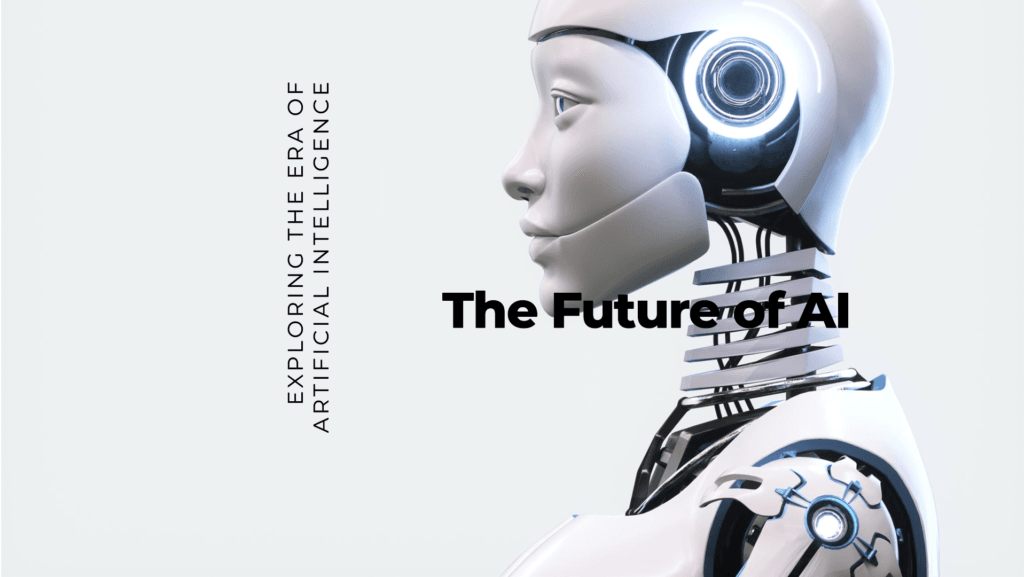
The Beginnings of AI Research
AI, as a field of study, officially began in the mid-20th century. The idea of machines that could simulate human intelligence was first proposed by pioneers like Alan Turing, who is often considered the father of AI. Turing developed the concept of a machine (now called the Turing Machine) capable of performing any calculation that a human could, laying the foundation for the computational models that would later drive AI.
In the 1950s and 1960s, researchers like John McCarthy and Marvin Minsky began to explore AI more deeply. McCarthy, for example, coined the term “artificial intelligence” and organized the famous Dartmouth Conference in 1956, which many regard as the birth of AI as an academic discipline. The early goals of AI research focused on creating “thinking” machines capable of reasoning, solving problems, and even learning.
Despite some early optimism, the field faced challenges, including limitations in computing power and a lack of understanding about how human intelligence truly works. By the 1970s and 1980s, AI experienced what is known as the “AI Winter” — a period of slowed progress due to unrealistic expectations and technical limitations.
Key Breakthroughs in AI: The Rise of Machine Learning
The most significant leap in AI came with the development of Machine Learning (ML) and, more specifically, Deep Learning. Unlike traditional AI, which relied on hard-coded rules and logic, ML enables machines to learn patterns and make decisions from data. This marked a shift toward more autonomous systems that could improve themselves over time.
By the 2000s, advances in computing power, large data sets, and better algorithms allowed AI to make leaps in performance. One of the game-changers was the advent of Deep Learning, a subset of ML that uses neural networks inspired by the human brain.
Modern AI Applications in Everyday Life
Today, AI is woven into the fabric of daily life, often in ways that most people don’t even realize. Here are some prominent areas where AI is making a massive impact:
1. Healthcare
AI is revolutionizing healthcare with applications that range from diagnosing diseases to personalizing treatment plans. AI-driven tools can analyze medical images, predict patient outcomes, and even suggest the best course of action for a doctor. Notably, AI has shown significant promise in areas like radiology, oncology, and genetic research, making treatments faster and more accurate.
2. Autonomous Vehicles
Companies like Tesla and Waymo have used AI to develop systems capable of perceiving the environment, making real-time decisions, and navigating safely without human intervention. AI technologies such as computer vision and reinforcement learning are at the heart of these innovations.
3. Natural Language Processing (NLP)
Applications like chatbots, virtual assistants (e.g., Amazon’s Alexa, Apple’s Siri), and machine translation (such as Google Translate) have made AI a valuable tool for communication and customer service. NLP is also used to analyze vast amounts of text data for sentiment analysis, summarization, and more.
4. Entertainment and Media
AI algorithms recommend the movies and music you’ll like, based on your viewing or listening history. Services like Netflix, Spotify, and YouTube rely on sophisticated AI models to suggest content that aligns with users’ preferences, helping to keep them engaged. AI also powers virtual assistants in video games, improving non-playable character (NPC) behavior and creating more realistic and immersive experiences.
5. Robotics and Automation
In manufacturing, AI is behind the rise of robotic process automation (RPA) and intelligent robots. These systems are capable of performing tasks more quickly, accurately, and consistently than humans. Robots powered by AI are used in industries like automotive manufacturing, warehousing, and even surgery.
6. Finance
The financial sector has been profoundly transformed by AI, from automated trading algorithms to fraud detection systems. AI tools can analyze market trends, predict stock movements, and even manage investments. Robo-advisors, which use AI to manage portfolios based on individual preferences and goals, have become increasingly popular.
Ethical and Societal Impacts of AI
As AI becomes more integrated into various sectors, ethical questions surrounding its use have gained prominence. Concerns include:
- Job Displacement: Automation and AI systems could replace many manual and repetitive jobs, creating societal challenges related to unemployment and skill gaps.
- Bias and Fairness: AI systems, if not carefully designed, may perpetuate biases present in training data, leading to unfair outcomes, especially in areas like hiring, policing, and lending.
- Privacy: The massive amounts of data required for AI to function raise concerns about user privacy and data protection.
Governments, organizations, and researchers are working to address these ethical challenges through AI ethics frameworks, regulations, and responsible AI design practices. The goal is to ensure AI benefits society without compromising human values.
The Future of AI
AI’s potential is vast, and the future promises even more transformative advancements. Here’s a glimpse of what could lie ahead:
- Artificial General Intelligence (AGI): While current AI systems excel at specific tasks (narrow AI), AGI would be capable of performing any intellectual task that a human can do. Achieving AGI remains a long-term goal, but progress is being made in understanding and building more generalized systems.
- AI in Creativity: AI is already contributing to creative fields like art, music, and writing. As AI systems become more sophisticated, they could play an even larger role in creating and enhancing creative works.
- AI in Climate Change and Sustainability: AI could play a pivotal role in solving global challenges, such as climate change. AI-powered models can optimize energy usage, reduce waste, and even help in environmental monitoring and conservation efforts.
9. Advancements in Medicine
Medicine has evolved dramatically over the centuries, with technology playing a pivotal role in shaping the future of healthcare. The medical field has seen a variety of breakthroughs, ranging from disease eradication and life-saving treatments to revolutionary techniques in genetics and biotechnology. Here, we will focus on two key areas that have significantly impacted the field of medicine: vaccination and disease eradication, and genetic engineering and CRISPR technology.
Vaccination and Disease Eradication
One of the most profound impacts of medical advancements is the development of vaccines. Vaccines have been instrumental in preventing deadly diseases, saving millions of lives, and eradicating conditions that once plagued entire populations.
- The Birth of Vaccines: The concept of vaccination began in the late 18th century, with Edward Jenner’s discovery of the smallpox vaccine. Jenner observed that people who had contracted cowpox seemed to be immune to smallpox, a deadly viral disease. By injecting people with cowpox, he showed they could be protected from smallpox, leading to the first vaccine. This laid the groundwork for developing vaccines against other diseases.
- The Eradication of Smallpox: The global vaccination campaign led by the World Health Organization (WHO) culminated in the eradication of smallpox in 1980, making it the first disease to be completely wiped out by human efforts. Smallpox killed millions over the centuries, but through widespread vaccination programs, it became history. This achievement is often regarded as one of the greatest public health victories.
- Polio and Other Vaccination Campaigns: Following the success against smallpox, efforts to combat polio also proved successful. In the mid-20th century, the polio vaccine was developed by Jonas Salk and Albert Sabin. With continued global vaccination programs, polio cases have drastically reduced, and it is now on the verge of eradication, with only a few countries still reporting cases.
- Vaccine Development for New Diseases: More recently, the development of vaccines for diseases like COVID-19 showed how quickly science can respond to new health threats. The mRNA technology used in the COVID-19 vaccines represents a significant leap in how vaccines can be created and distributed, opening up new possibilities for preventing future pandemics.
Genetic Engineering and CRISPR Technology
Alongside vaccines, advancements in genetic engineering and biotechnology have transformed the possibilities within medicine, enabling the modification of genes and the treatment of genetic disorders in ways that were once thought impossible.
- The Discovery of DNA: James Watson and Francis Crick’s discovery of the DNA structure in the 1950s opened the door to our comprehension of the genetic code and how it governs biological functions. This discovery led to the development of genetic research, allowing scientists to understand the root causes of many diseases, especially hereditary and genetic disorders.
- Gene Therapy: One of the most groundbreaking aspects of genetic medicine is gene therapy. Gene therapy involves altering the genetic material within a person’s cells to treat or cure diseases. This could mean replacing defective genes that cause genetic disorders with healthy ones, or introducing new genes that can help fight diseases like cancer. While still in the experimental stage for many conditions, gene therapy has already shown promise in treating rare genetic diseases like sickle cell anemia and certain types of inherited blindness.
- CRISPR Technology: The advent of CRISPR (Clustered Regularly Interspaced Short Palindromic Repeats) technology in the last decade marked a major milestone in genetic engineering. CRISPR allows for precise editing of the DNA sequence, enabling scientists to target specific genes and modify them in living organisms. This technology has revolutionized genetic research by offering an affordable and efficient way to edit genes, offering new potential in curing genetic diseases and even enhancing our understanding of complex conditions like cancer and neurological disorders.
- Potential for Personalized Medicine: With advances in genetic engineering, doctors are now able to offer more personalized treatment options. By understanding a patient’s genetic makeup, healthcare providers can tailor treatments and medications to the individual, improving the efficacy of treatments and reducing the risk of side effects. This approach, called personalized or precision medicine, is set to revolutionize healthcare by offering treatments that are specifically designed for each patient’s unique genetic profile.
The Future of Medicine: What Lies Ahead?
With each new discovery and technological leap, the potential to cure previously untreatable diseases expands. As CRISPR technology and gene editing continue to evolve, scientists are hopeful that they will unlock cures for a variety of genetic disorders, including cystic fibrosis, muscular dystrophy, and even more complex conditions like Alzheimer’s disease.
Furthermore, innovations in artificial intelligence (AI) and machine learning are helping to accelerate drug discovery, improve diagnostic accuracy, and provide more effective treatment plans. The integration of AI in healthcare allows for more efficient analyses of medical data, leading to faster diagnoses and better patient outcomes.
Overall, the field of medicine is advancing at an extraordinary pace, offering new hope to millions around the world. With continued research, collaboration, and technological innovation, the future of medicine promises to be even more transformative, potentially saving countless lives and changing the way we approach health and disease.
10. Renewable Energy Technologies
As the world faces increasing environmental challenges, the shift toward renewable energy technologies has become one of the most critical and transformative moments in history. These technologies not only promise to reduce our dependence on fossil fuels but also help combat climate change by decreasing greenhouse gas emissions. Let’s take a closer look at some of the most important renewable energy innovations that are shaping the future.
Solar Energy
Among the most well-known renewable energy sources is solar energy. Photovoltaic (PV) cells are used to capture solar energy and turn it directly into electrical power. Over the past few decades, the technology has seen a remarkable reduction in costs, making it more accessible to both individuals and businesses. The efficiency of solar panels continues to improve, and new innovations like solar roof tiles and floating solar farms are expanding its potential uses.
Why it’s revolutionary:
Solar energy is abundant, environmentally friendly, and can be harnessed almost anywhere. It’s the cornerstone of many countries’ renewable energy plans, especially those in sunny regions where it can provide a significant portion of energy needs. The growing number of solar installations worldwide is a testament to the increasing reliance on this technology.
Wind Energy
Wind power is another key player in the renewable energy sector. Like solar power, wind energy has experienced massive improvements in technology, including larger and more efficient turbines. Offshore wind farms, placed far from shore in deep waters, have become an emerging trend, tapping into stronger and more consistent wind currents.
Why it’s revolutionary:
Wind energy offers a virtually unlimited and clean power source. It’s also one of the fastest-growing sectors in renewable energy, particularly in countries like Denmark, the U.K., and the U.S., where large-scale wind farms are becoming commonplace. Offshore wind farms, in particular, are paving the way for a new generation of sustainable energy infrastructure.
Hydropower
Hydropower, or hydroelectric energy, has been around for over a century, but it remains one of the most efficient renewable energy sources in the world. By using the flow of water, typically from rivers or dams, to spin turbines and generate electricity, hydropower accounts for about 16% of global electricity production. New technologies are also enhancing hydropower’s potential, such as small modular hydropower plants that can be deployed in smaller streams or rivers without the environmental impact of traditional large-scale dams.
Why it’s revolutionary:
Hydropower is incredibly reliable and can provide a constant, stable source of energy. It’s especially valuable for balancing electricity supply and demand, as hydro plants can ramp up or down quickly to meet fluctuations in energy use. Additionally, it produces no greenhouse gas emissions once the infrastructure is in place.
Geothermal Energy
Geothermal energy taps into the heat beneath the Earth’s surface to generate electricity and provide heating. By drilling deep into the Earth’s crust, geothermal plants can access hot water or steam reservoirs, which are then used to power turbines that generate electricity. This technology is particularly useful in areas near tectonic plate boundaries, where geothermal activity is abundant, such as Iceland and parts of the United States (like California).
Why it’s revolutionary:
Geothermal energy is a stable, reliable, and virtually inexhaustible source of energy. Unlike solar and wind power, which depend on weather conditions, geothermal energy can provide a constant supply of power, day or night, making it one of the most reliable renewable sources.
Bioenergy
Bioenergy refers to energy derived from organic materials such as plants, animal waste, and other biological sources. This includes biofuels like ethanol and biodiesel, which are used as alternatives to gasoline and diesel. Bioenergy can also be used to generate electricity by burning biomass or through advanced technologies like biogas production, where organic waste is converted into methane.
Why it’s revolutionary:
Bioenergy is highly versatile and can be produced from a wide range of feedstocks, including agricultural residues and even algae. Additionally, biofuels can be integrated into existing infrastructure, such as fuel distribution systems, making it easier to transition to renewable energy.
Global Shift Towards Sustainability
These renewable energy technologies play a vital role in the global shift toward sustainability. Governments, businesses, and individuals are increasingly investing in green energy solutions, both for environmental reasons and to address the rising costs of fossil fuels. Countries like Germany, China, and India are leading the way in the adoption of renewable energy, setting ambitious targets to reduce carbon emissions and expand clean energy infrastructure.
The Bigger Picture:
As these technologies evolve and become more efficient, they have the potential to not only reduce carbon footprints but also create millions of jobs in the green energy sector. In addition, renewable energy infrastructure is becoming more integrated with smart grids, which allow for better management of energy distribution and consumption, further optimizing efficiency and reducing waste.
The Future of Renewable Energy
The future of renewable energy looks incredibly promising, thanks to ongoing advancements in technology. With improvements in energy storage, such as better battery technologies, the intermittency of solar and wind energy can be overcome. Innovations in hybrid energy systems, where multiple renewable sources work together, will provide more robust and flexible solutions for energy generation.
In addition, the cost of renewable technologies continues to decrease, making them more competitive with traditional fossil fuels. With more innovation, larger-scale deployment, and government incentives, we may soon see a world where renewable energy dominates the energy mix, creating a cleaner, more sustainable planet for future generations.
Conclusion: Reflecting on the Top Moments and Looking Ahead
Technology is often described as the catalyst for change. Looking back at the top 10 technological moments that have shaped the world, it’s clear that each of these breakthroughs was a pivotal turning point. The invention of the wheel, the printing press, the harnessing of electricity, and the creation of the internet—these are just a few examples that sparked enormous waves of change.

Reflecting on these moments, we see how each one laid the groundwork for future advancements. The wheel, for instance, didn’t just impact transportation; it was a fundamental piece of machinery that enabled the development of tools and vehicles. Similarly, the invention of the printing press didn’t just allow for books to be mass-produced—it ignited a wave of intellectual exchange and revolutionized education.
The story of technology is one of constant reinvention. As we move from one breakthrough to the next, each invention builds upon what came before it, creating an interconnected web of progress. The internet, which began as a military research project, now links the entire world. Smartphones, powered by advanced computing and mobile networks, have become central to modern life, shaping communication, entertainment, and even the way we do business.
New technologies like artificial intelligence, genetic engineering, and renewable energy are already changing industries and will continue to shape society in ways we can only imagine. We are standing on the precipice of what may be the next transformative moment in human history. But with each new leap forward, we must ask ourselves: How will these advancements impact the world? What challenges will we face? And how can we ensure that these technologies benefit all of humanity?
The future of technology is not just about the tools we create, but how we choose to use them. It’s up to us to ensure that the technologies we develop lead to positive change and help us tackle the biggest challenges we face, from climate change to global inequality.
In conclusion, these 10 technology moments represent not only milestones in innovation but also the spirit of human ingenuity. They remind us of the power of creativity and determination to change the world. As we continue to innovate, we must stay grounded in the lessons of the past, while looking forward to the opportunities the future holds. The next great technological moment is just around the corner, and the possibilities are boundless.
FAQs – Frequently Asked Questions
What is the most impactful technology moment in history?
The most impactful technology moment in history is subjective, but many would argue that the invention of the printing press by Johannes Gutenberg is one of the most significant. It made knowledge accessible to the masses, leading to the Renaissance, the Scientific Revolution, and the Enlightenment. Other notable contenders include the invention of electricity and the development of the internet, as both have reshaped modern civilization in profound ways.
How has technology changed human life?
Technology has revolutionized every aspect of human life, from communication to healthcare, and transportation to entertainment. In the past century alone, technology has drastically increased our lifespan through medical innovations, improved global connectivity through the internet, and made everyday tasks easier with tools like smartphones and personal computers. These changes have led to new industries, job creation, and entirely new ways of living, working, and socializing.
What role does AI play in future technological advancements?
Artificial Intelligence (AI) is poised to be a central part of future technological advancements. AI’s ability to process vast amounts of data, learn from patterns, and automate tasks will drive innovation in areas such as healthcare, transportation, education, and customer service. From self-driving cars to personalized medicine, AI will be a catalyst for progress. Moreover, its integration with other technologies like 5G networks, quantum computing, and robotics will further elevate its impact.
Why does the modern world need renewable energy?
Renewable energy is crucial for addressing climate change, reducing carbon emissions, and securing a sustainable future for the planet. Technologies like solar power, wind energy, and hydropower are key to replacing fossil fuels that contribute to global warming. By transitioning to cleaner energy sources, we not only reduce environmental damage but also create jobs, stimulate economies, and reduce dependence on finite resources. As technology in renewable energy advances, it becomes more efficient, affordable, and accessible for all.
What upcoming technologies could change the world?
Several emerging technologies have the potential to change the world as we know it. Quantum computing, for example, promises to solve complex problems far beyond the capabilities of today’s computers. Brain-computer interfaces could revolutionize how we interact with technology, offering new ways for humans to control machines with their thoughts. Biotechnology advancements, such as CRISPR, may allow for the eradication of genetic diseases. Additionally, space exploration technologies might pave the way for human settlement on other planets, changing the course of human history. These innovations are still in development, but they hold great promise for shaping the future.



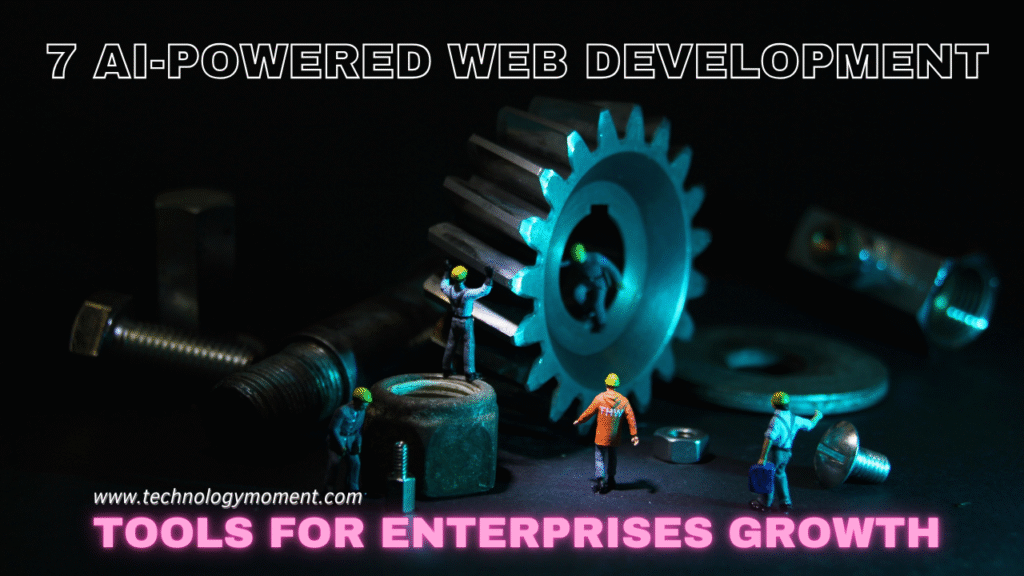

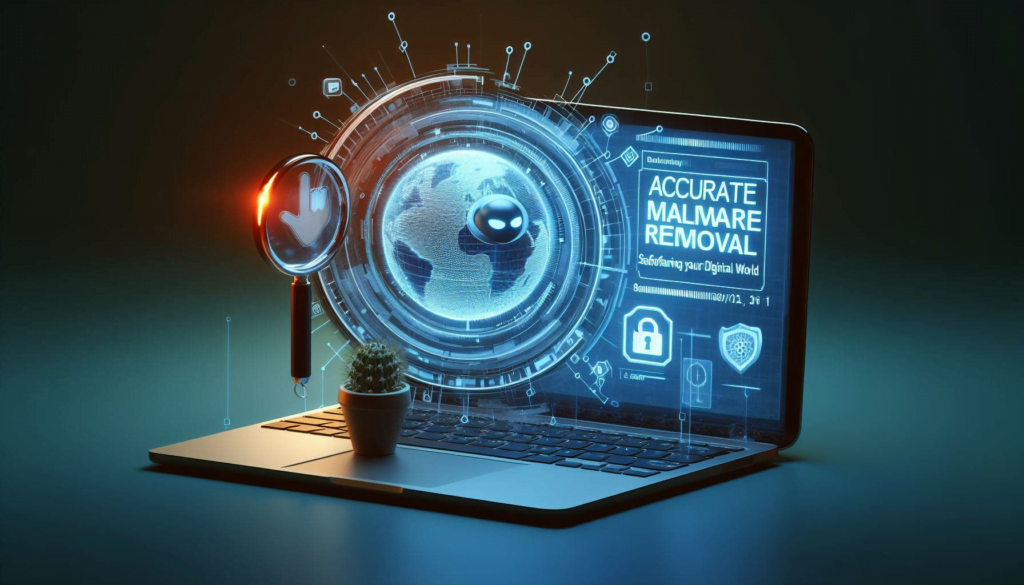

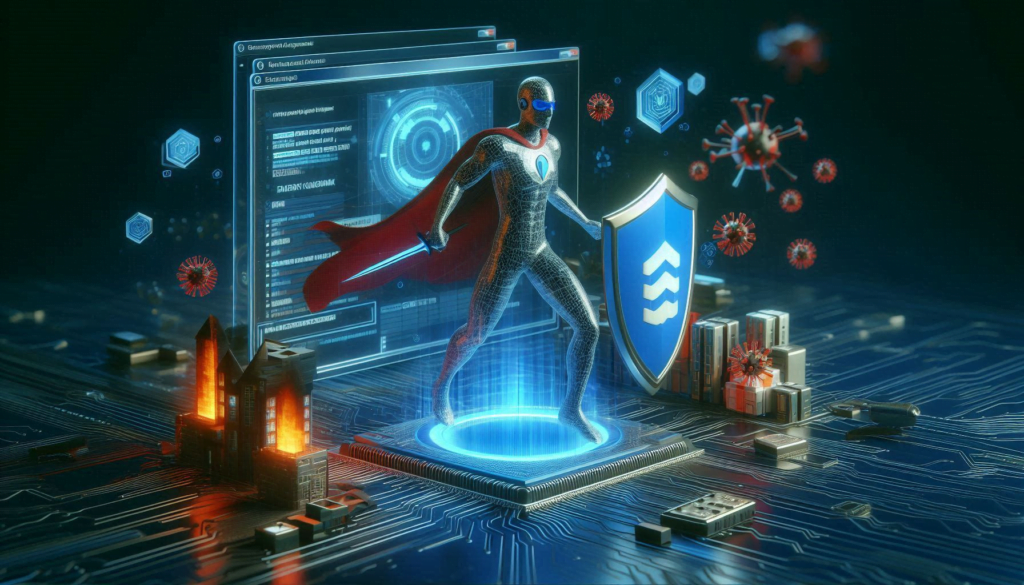



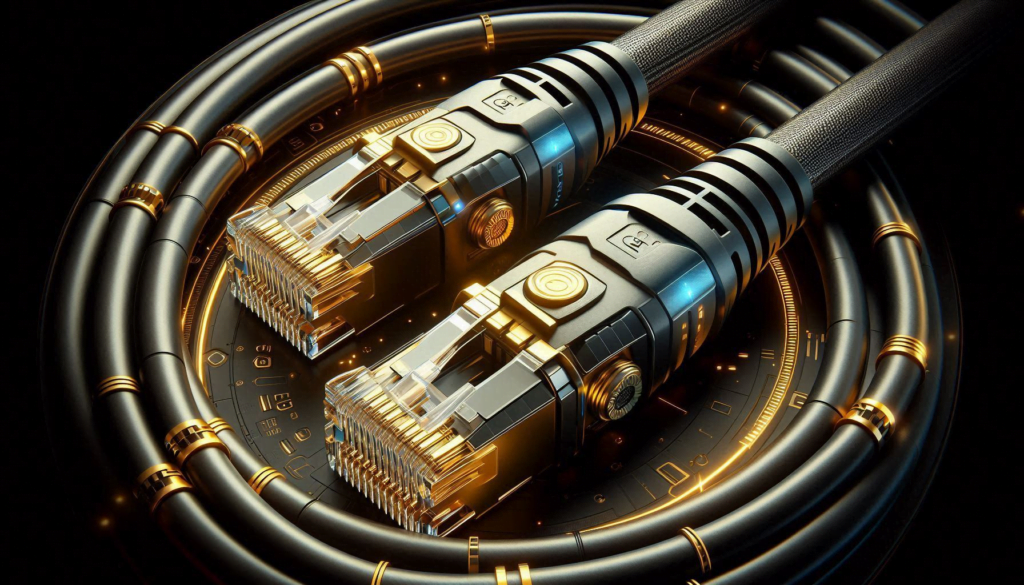


Great post! It’s amazing how these key moments in technology have completely transformed the way we live and interact. The internet and the rise of mobile technology stand out as real game-changers. Exciting to think about what the future holds in the world of tech!
Such a well-written article! It’s incredible to think about how these tech milestones have shaped the world in ways we sometimes take for granted. The launch of the internet and the development of smartphones were truly revolutionary. Looking forward to the next big wave of innovation!
Excellent post! It’s fascinating to think about how each of these technological milestones has redefined the way we live, work, and connect. The rise of artificial intelligence and the spread of mobile technology are truly transformative. Can’t wait to see what innovations are just around the corner!
Really enjoyed reading this! It’s amazing how these key technological moments have revolutionized nearly every aspect of our lives. The invention of the internet and the launch of the first iPhone are definitely game-changers. I’m excited to see what other breakthroughs will come next!
What an insightful article! It’s incredible how these technological breakthroughs have shaped our world, especially the internet and mobile devices. These innovations have changed the way we communicate, work, and even think. Excited to see what the next big moment in tech will be!